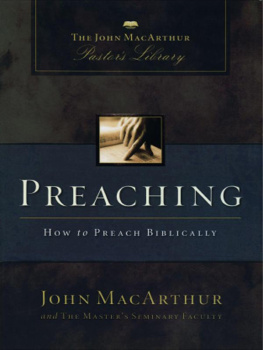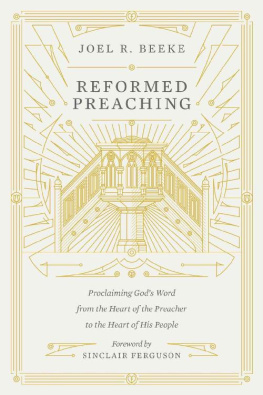

2015 Otis Moss III
First edition
Published by Westminster John Knox Press
Louisville, Kentucky
15 16 17 18 19 20 21 22 23 2410 9 8 7 6 5 4 3 2
All rights reserved. No part of this book may be reproduced or transmitted in any form or by any means, electronic or mechanical, including photocopying, recording, or by any information storage or retrieval system, without permission in writing from the publisher. For information, address Westminster John Knox Press, 100 Witherspoon Street, Louisville, Kentucky 40202-1396. Or contact us online at www.wjkbooks.com.
Unless otherwise indicated, Scripture quotations are from the New Revised Standard Version of the Bible, copyright 1989 by the Division of Christian Education of the National Council of the Churches of Christ in the U.S.A., and are used by permission. Scripture quotations marked NIV are taken from THE HOLY BIBLE, NEW INTERNATIONAL VERSION, NIV Copyright 1973, 1978, 1984, 2011 by Biblica, Inc. Used by permission of Zondervan. All rights reserved worldwide. Scripture quotations marked The Message are taken from THE MESSAGE. Copyright by Eugene H. Peterson 1993, 1994, 1995, 1996, 2000, 2001, 2002. Used by permission of NavPress Publishing Group.
Excerpts from Strange Fruit, by Lewis Allan, copyright 1939 (renewed) by Music Sales Corporation. International copyright secured. All rights reserved. Used by permission of Music Sales Corp. and Edward B. Marks Music Co. Excerpt from Down Hearted Blues, words by Alberta Hunter, music by Lovie Austin, copyright 1922 Alberta Hunter and Lovie Austin, copyright 1949, 1963 Universal Music Corp. and Alberta Hunter Music Co. Copyright renewed. All rights reserved. Used by permission. Reprinted by permission of Hal Leonard Corporation. Harlem (2) from The Collected Poems of Langston Hughes by Langston Hughes, edited by Arnold Rampersad with David Roessel, Associate Editor, copyright 1994 by the Estate of Langston Hughes. Used by permission of Alfred A. Knopf, an imprint of the Knopf Doubleday Publishing Group, a division of Penguin Random House LLC, and Harold Ober Associates. All rights reserved.
Every effort has been made to determine whether texts are under copyright. If through an oversight any copyrighted material has been used without permission, and the publisher is notified of this, acknowledgment will be made in future printings.
Book design by Drew Stevens
Cover design by designpointinc.com
Cover photo by The All-Nite Images under the Creative Commons License
Library of Congress Cataloging-in-Publication Data
Moss, Otis.
Blue note preaching in a post-soul world : finding hope in an age of despair / Otis Moss III. First edition.
pages cm
ISBN 978-0-664-26160-3 (alk. paper)
1. African American preaching. I. Title.
BV4221.M67 2015
251dc23
2015031927
 The paper used in this publication meets the minimum requirements of the American National Standard for Information SciencesPermanence of Paper for Printed Library Materials, ANSI Z39.48-1992.
The paper used in this publication meets the minimum requirements of the American National Standard for Information SciencesPermanence of Paper for Printed Library Materials, ANSI Z39.48-1992.
Most Westminster John Knox Press books are available at special quantity discounts when purchased in bulk by corporations, organizations, and special-interest groups. For more information, please e-mail .
For Monica, who has been my muse
and the metronome of my heart.
You keep my heart beating to the rhythm of love.
CONTENTS
There are several key people I must thank and give acknowledgment: Dean Gregory Sterling for the kind invitation to present the Lyman-Beecher lectures at Yale Divinity School. I cannot thank you enough for this grand and wonderful opportunity.
To my listening partner and spouse, Monica Moss. She read and listened to these lectures numerous times. She joked one day and said, We gave the Beecher Lectures! And it is true, we did! Thank you, Monica, for your hours of input, editorial suggestions, and love. None of this could have been possible without your support, your love, your kindness, and your humor.
I want to also thank my mother and father, Otis and Edwina Moss. My exposure to the voices of Gardner C. Taylor, Henry Emerson Fosdick, Howard Thurman, Sandy Ray, Samuel DeWitt Proctor, and many others came through their love of great preaching and, on road trips across the country, from hearing tapes of these marvelous ministers.
Thank you to my executive assistant, Melody Morgan, a woman who loves great writing. The conversations about Toni Morrison and Gloria Naylor were invaluable for this project. Not only the conversations, but your dedication to transcribe into a readable format my crazy notes and the pictures I created for this lecture.
I also want to thank two brilliant young preachers, the Rev. Neichelle Guidry-Jones and the Rev. Aaron McLeod. Rev. Neichelle offered phenomenal editorial work for the lecture, placing the lecture in Pages and Word with special notations for my review. Rev. McLeod, our director of Special Projects at Trinity United Church of Christ, made sure our Trinity community was plugged in, praying and joining the pastor physically and virtually for these lectures.
Finally, I want to thank the people of Trinity United Church of Christ, a church with a long tradition of prophetic preaching solidified by my predecessor, the Rev. Dr. Jeremiah A. Wright, Jr. To the village of Trinity, I thank you for loving Monica, Elijah, Makayla, and myself and supporting us not only as we prepared for this event but also for the last seven years of ministry. You have taught me the power of grace, humor, and joy, and I thank you.
The work and art of the preacher is a peculiar enterprise, often misunderstood and misinterpreted. The preaching art has been satirized in popular culture and shaded with demonic overtones by literary mavens who do not recognize the work of the preacher as a discipline and an art. Preaching has faced the judgment of academia and been marginalized by western culture, yet the word continues to go forth in various forms.
I grew up in a faith community where preaching and the preacher were respected as artists and academics, weaving together poetry and pragmatic wisdom for daily living. On Sunday mornings, I witnessed my father and pastor of the Olivet Institutional Baptist Church shape a new reality with metaphor, poetic rhythm, and intellectual engagement of philosophers. He stood week after week and dialogued with a text while he referenced Howard Thurman, Reinhold Niebuhr, Abraham Heschel, Fanny Lou Hamer, Khalil Gibran, Benjamin Elijah Mays, Constance Baker Motley, and Dorothy Day.
Each Sunday was a full meal of word, current affairs, Southern storytelling, and humor. Each week, my father created a message in which he struggled with great ideas and challenged us to question the world. He was raised in the segregated South, a pioneer in the Civil Rights Movement, organizer with the Atlanta Sit-In Movement, and a pastor. His theology and preaching introduced me to the importance of Blues and Jazz to the preaching project.
Black preaching, I believe, is more than preaching with a Black face; it is a unique cultural narrative and theological enterprise where African motifs meet diverse western influences of North America. A beautiful, bold, homiletical voice, poetry, prophetic witness, southern storytelling, lament, blues, and celebration are born out of this tradition.
Before his passing, I spent several consecutive summers with Dr. Fred Craddock, without a doubt, one of North Americas homiletical luminaries. He served as Bible study teacher and theologian-in-residence for the Childrens Defense Fund, Samuel DeWitt Proctor Conference of Child Advocacy at the Alex Haley Farm in Clinton, Tenn. A bunch of preachers, young and old, gathered around the lunch table daily to ask Dr. Craddock questions. He was gracious with his time and patient with us. I remember him remarking about the importance of Black preaching; All preachers will do well to study the history, structure, and theology of the preached word that is birthed from the Black church. It was a quiet matter-of-fact comment coming from this intellectual giant, but it spoke to the yearning in my heart.
Next page














 The paper used in this publication meets the minimum requirements of the American National Standard for Information SciencesPermanence of Paper for Printed Library Materials, ANSI Z39.48-1992.
The paper used in this publication meets the minimum requirements of the American National Standard for Information SciencesPermanence of Paper for Printed Library Materials, ANSI Z39.48-1992.